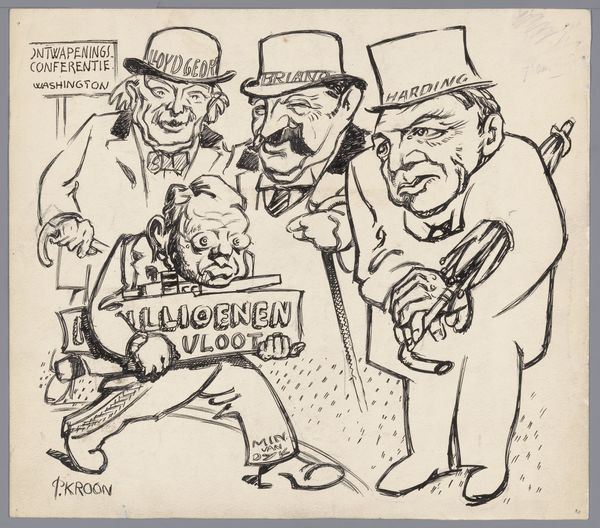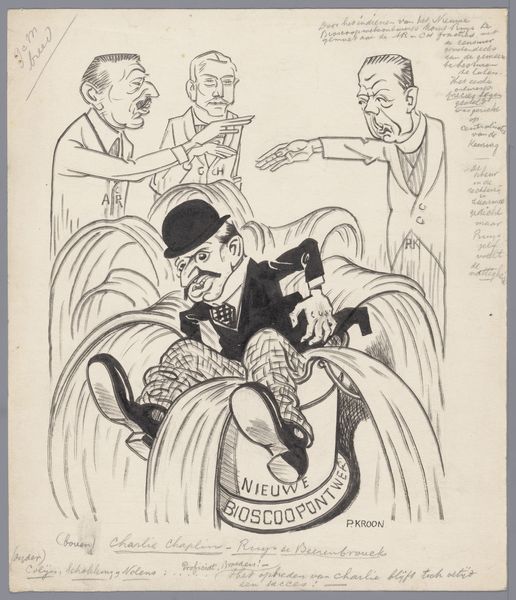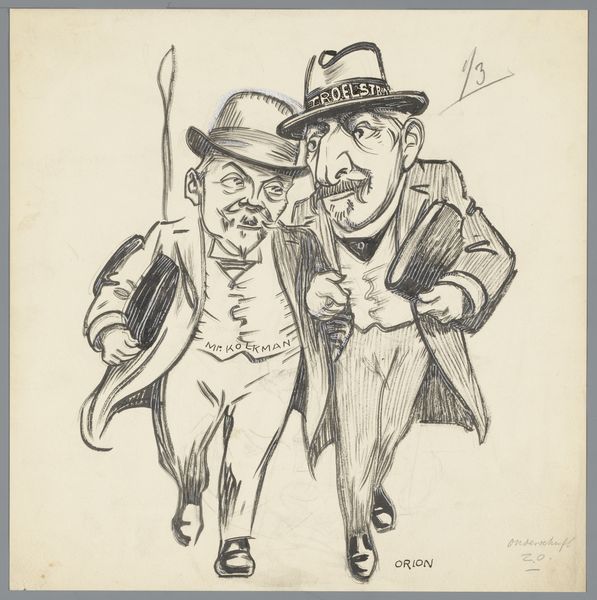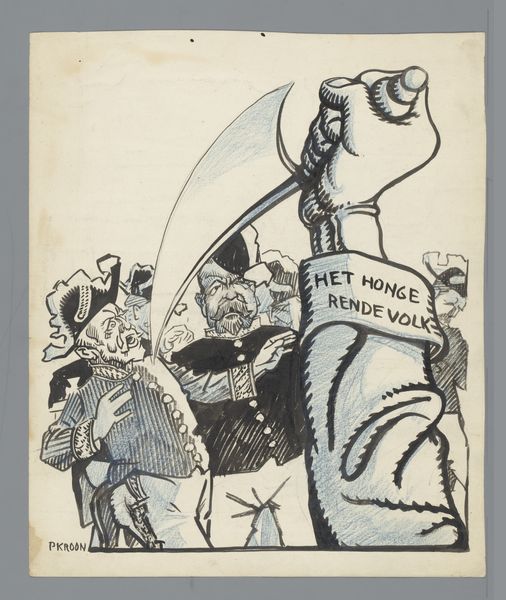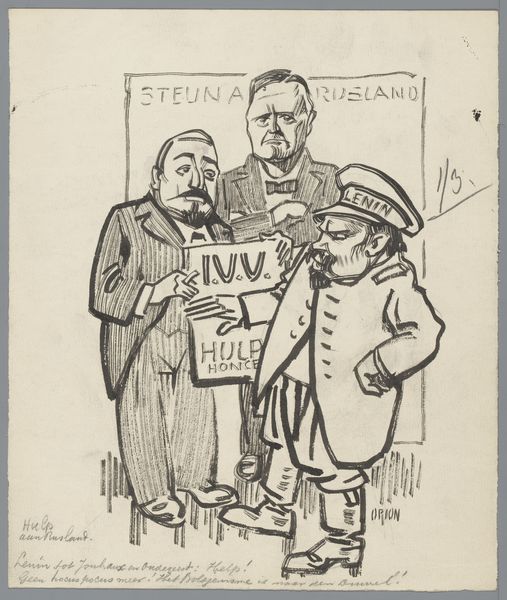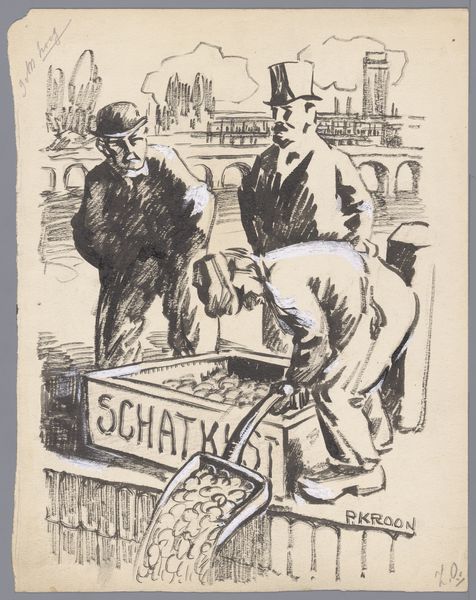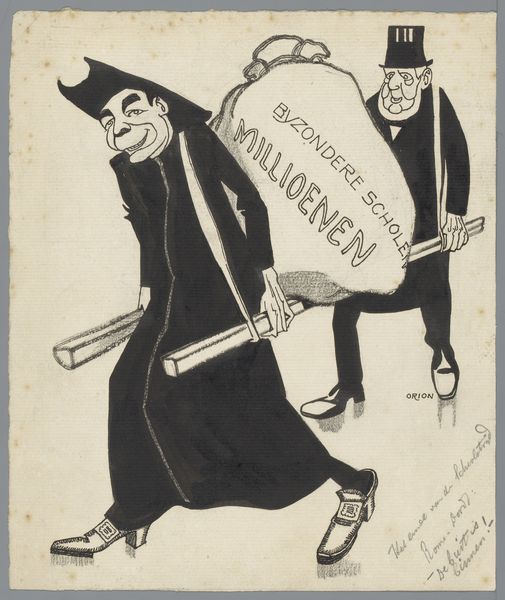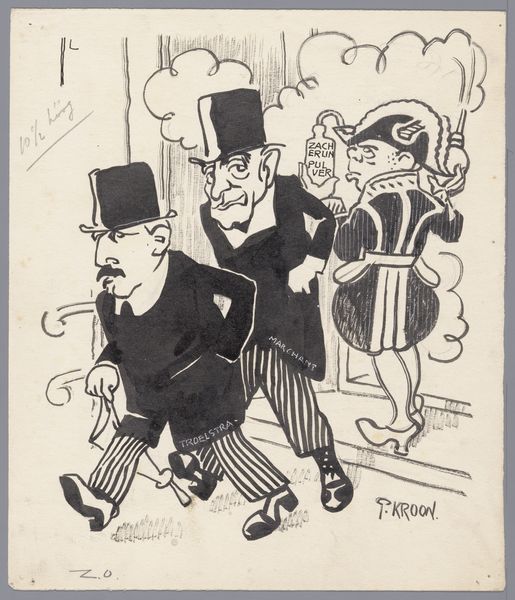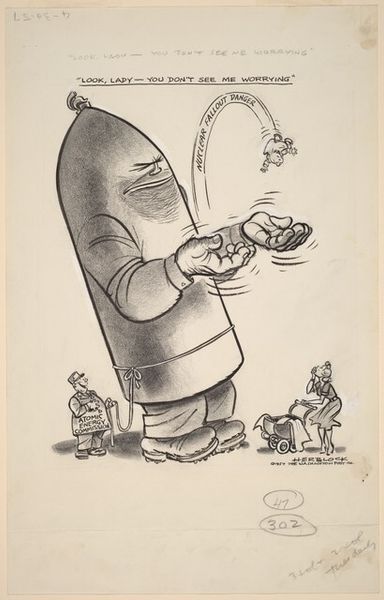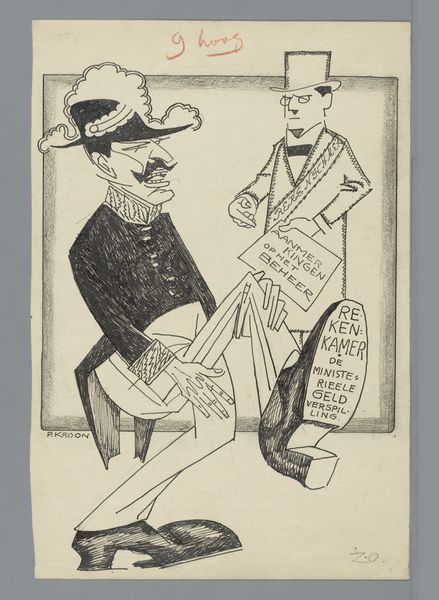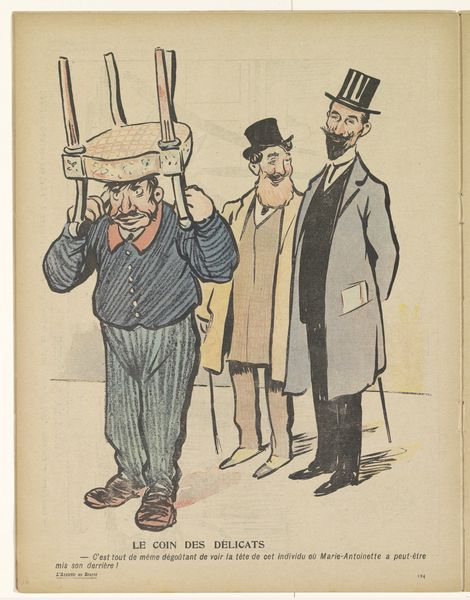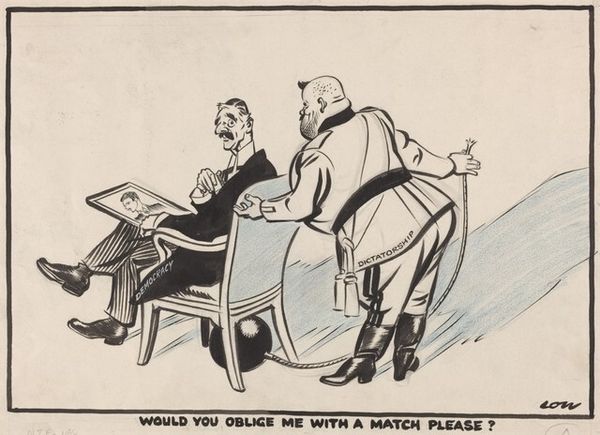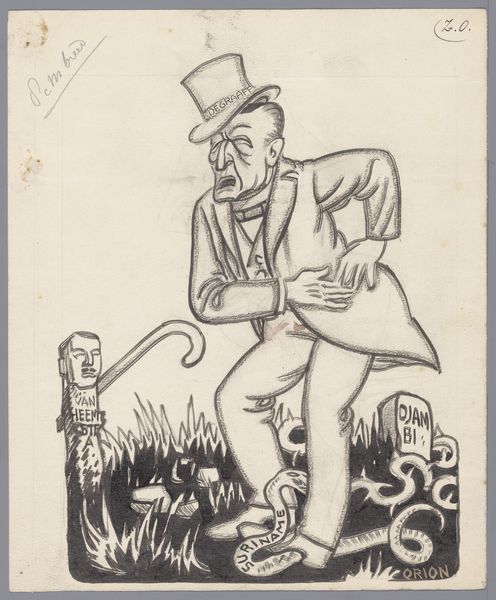
drawing, pencil, pen
#
drawing
#
quirky illustration
#
childish illustration
#
cartoon like
#
cartoon based
#
caricature
#
cartoon sketch
#
personal sketchbook
#
folk-art
#
pencil
#
sketchbook drawing
#
pen
#
genre-painting
#
cartoon style
#
cartoon carciture
#
sketchbook art
Dimensions: height 212 mm, width 250 mm
Copyright: Rijks Museum: Open Domain
Curator: This intriguing drawing, "Colijn met de anti-revolutionaire kiezer als ezel," roughly translates to "Colijn with the Anti-Revolutionary Voter as a Donkey". It was created sometime between 1900 and 1935 by the artist who goes by the signature ORION. The artist employed a combination of pen and pencil in this political caricature. What's your immediate impression? Editor: Stark. The linear precision of the pen work combined with softer pencil shading definitely conveys a deliberate contrast between the sharply defined politician and the donkey voter. Note also the repetition of blocky shapes-- the building-like letters above mirroring the bulk of the figure's coat and the animal's body. It certainly feels weighted, almost oppressively so. Curator: Indeed. The image speaks volumes about the political climate of the time. Colijn, presumably a political figure, is depicted wielding control over a donkey labeled "AR kiezer" or Anti-Revolutionary voter. The poster in the background shows the message "DENK PETRO EN DE TIEN GEBODEN", which roughly translates to "THINK PETROL AND THE TEN COMMANDMENTS", thus encapsulating the core ideology of the Anti-Revolutionary party rooted in religion and oil interests. The drawing seems to critique their reliance on a perhaps less-than-intelligent electorate. Editor: Visually, that point is rather explicitly driven home. The contrast between the stern-faced man and the slack-jawed, almost bewildered expression on the donkey creates a definite power dynamic. The formal element of line further supports this; firm and decisive for the politician, loose and almost unfinished in areas of the donkey. This imbalance clearly aims to undermine the 'voter'. Curator: It's also interesting to observe how the artist utilizes familiar animal symbolism, depicting voters as donkeys to portray their perceived stubbornness or lack of independent thought. Furthermore, the drawing subtly hints at how political leaders like Colijn might have manipulated or taken advantage of certain segments of the voting population to advance their own agendas, aligning with an old political ploy. Editor: It is true that such associations are by no means rare. What stands out, though, is the drawing's efficient simplicity: such loaded imagery communicated through what amounts to a series of lines, forms and simple textural variations, and clearly articulated for the historical context. A testament to how, as Duchamp was arguing, idea triumphs over the purely retinal. Curator: Absolutely. This work is an effective example of how visual media can convey complex social and political commentary. I am reminded again of the critical power of art in political discourse, prompting the masses to analyze the power relationships within their own society. Editor: And in turn, how our understanding is enriched through sensitivity to its graphic impact, bringing art’s formal tools into dialogue with political analysis.
Comments
No comments
Be the first to comment and join the conversation on the ultimate creative platform.
